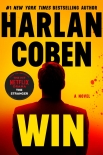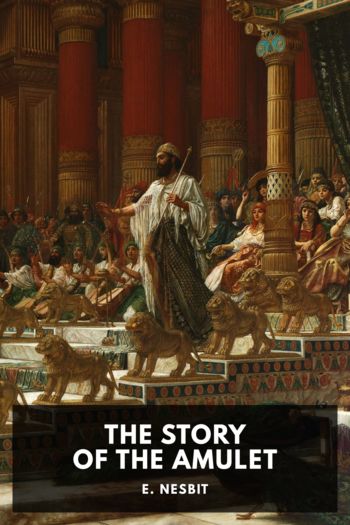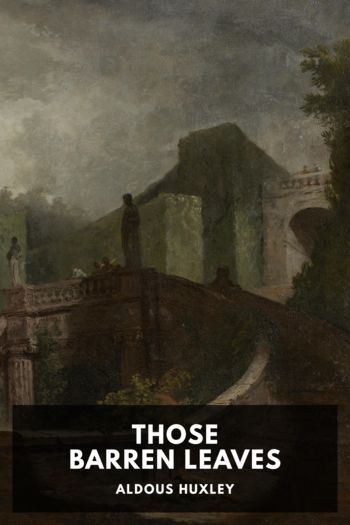WIN, Coben, Harlan [ebook and pdf reader .txt] 📗

Book online «WIN, Coben, Harlan [ebook and pdf reader .txt] 📗». Author Coben, Harlan
After I view ten of the negatives, I say to him, “I’m sorry you had to see these.”
“Do you know who those girls are?”
I do. More than that, I know where the photographs were taken.
In the Hut of Horrors.
CHAPTER 32
It is dark by the time I arrive at the faculty housing area of Haverford College.
I drove myself from the airport because I want no one around. I drive fast. I drive with a fury. When Ian Cornwell sees me at his door at this late hour, he is unsure how to react. Part of him still fears my name and how important my family is to this institution—but more of him, I have come to believe, wants nothing to do with me or the awful past I keep dragging back to his doorstep.
“It’s late,” Ian Cornwell tells me as I stand on his stoop. He blocks the door so that I cannot enter. “I already told you everything I know.”
I nod. Then without warning, I punch him hard in the stomach. He folds at the waist as though it has hinges. I shove him inside and close the door behind me. The punch was well placed, so as to knock the wind out of him. His eyes are wide with fear as he retches, seeking air. I know that I should feel bad, but as I explained previously, violence gives me a rush. It would be dumb to lie and pretend otherwise.
He drops to the ground. Having the wind knocked out of you just means the impact to your celiac plexus causes a temporary diaphragmatic spasm. It doesn’t last. I pull over a chair and sit next to him. I wait until he can breathe.
Through gritted teeth, Cornwell says, “Get out.”
“Look at these.”
Pierre-Emmanuel helped me make rudimentary reproductions of two of the negatives. I drop them next to him. He looks at them and then he looks back at me in abject horror.
“These were hidden in the frame of the Vermeer,” I say.
“I don’t understand.”
“These girls,” I continue, “are victims from the Hut of Horrors.”
His eyes go wide again, a mixture of fear and total confusion. It doesn’t compute for him. Not yet. “What does that have to do—?”
“I don’t have time for this, Ian, so I’ll ask you one more time. What really happened the night of the heist?”
He puts his hand on his stomach and rolls into a sit. The stomach will be sore tomorrow. I can see his mind searching for a way out, and what that tells me, with very little doubt, is that Ian Cornwell knows more than he is saying. I say “very little doubt” rather than “no doubt” because, of course, I can be fooled as easily as anyone. The stupidest men are the ones who think they can’t be wrong. The stupidest men are the ones who are most sure. The stupidest men are the ones who don’t know what they don’t know.
But right now, if I were to hypothesize, Professor Ian Cornwell is stalling so that he can rummage through all the possibilities. Showing him two sickening images of the fifteen-year-old victim we will call Jane Doe—in both she is naked, on her stomach, and trussed with barbed wire—was, of course, designed to shock him into revealing the truth. Now, however, I wonder whether I went too far, if the images will cause paralysis rather than openness. My concern now is that his brain is working thusly: Suppose, he may be wondering, he does confess to something involving the art heist—will that now link him to these unspeakable crimes? Could he end up being charged as an accessory? Silence has worked for him so far. Silence eventually got the FBI to leave him be. Silence has kept him out of prison.
His wheels are churning. I give him another second, perhaps two, and then he looks up at me with pleading eyes.
“I wish I could help you,” Ian Cornwell predictably begins, “but I’m telling the truth. I don’t know anything.”
Many martial arts specialize in what we commonly call pressure points—that is, pressing or striking sensitive nerve clusters in order to cause pain. I would not advise using them in a real fight. In a real fight, you are in constant motion, and your opponent is in constant motion. That is two moving targets, thereby making strikes with the pinpoint accuracy these techniques rely upon unrealistic. Pressure points, when done well, can cause excruciating pain, though you never know your opponent’s pain threshold. Opponents often react by squirming away from such a grip with suddenly alarming strength.
My—pardon the pun—(pressure) point?
Pressure points work best in more passive situations. They are, if you will, pain-compliance techniques. If you want to safely but effectively escort a drunk patron out of a pub, for example, or break a hold, they can be useful. If, for a more vivid and immediate example, you want to cause enough distress to induce someone to cooperate, pressure points can be frighteningly efficient.
I won’t go into much technical detail, but I grab his hair with one hand to hold him in place. Using my opposing thumb, I dig deep into his neck, more specifically, the upper trunk of the brachial plexus above the clavicle known as Erb’s point. Ian Cornwell’s body convulses as though I had hit him with a stun gun, which, come to think of it, I should have brought. He tries to let out a gnarled scream. I pull back my thumb suddenly, giving him a second of relief, but I don’t stop there. I move quickly to another spot on the underside of the bicep, squeeze hard, cover his mouth. Then I go back to Erb’s point, pushing down on the nerve bundle even harder. Ian Cornwell thrashes impotently, like a freshly caught fish dropped on a dock. I straddle him now, pin him down, and go after the pressure point on the underside of the jaw. His body stiffens. Then I move up to the temples,





Comments (0)